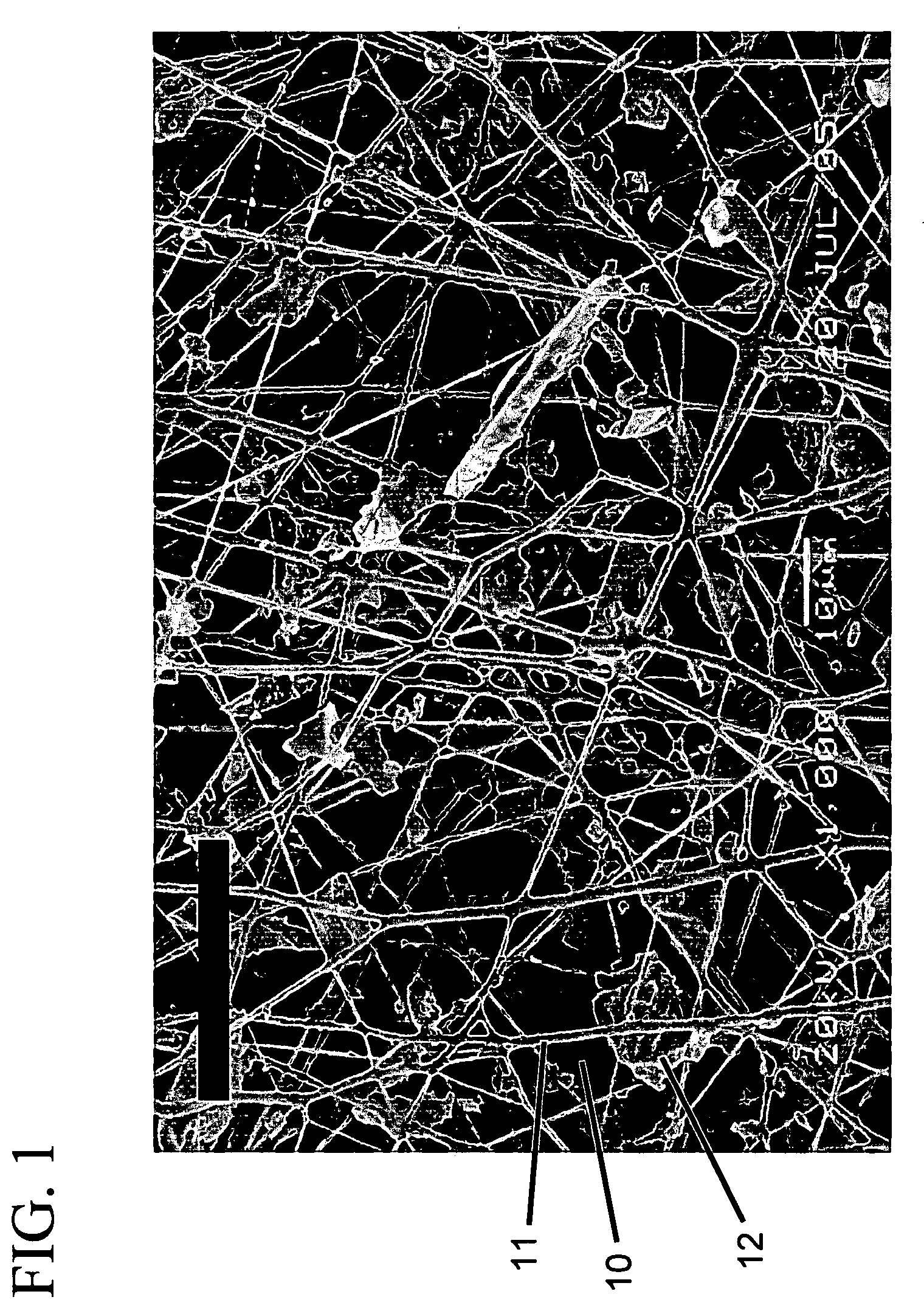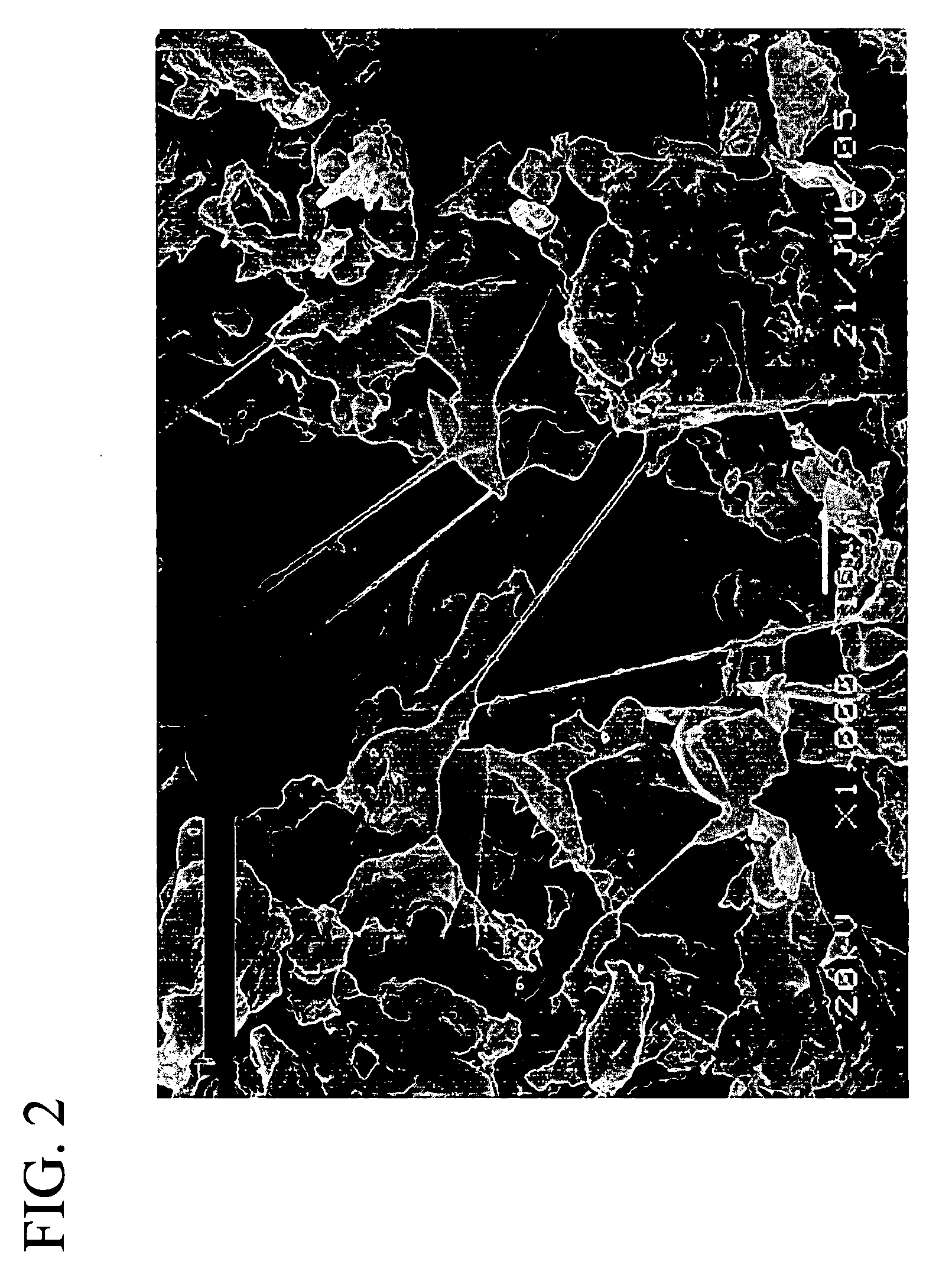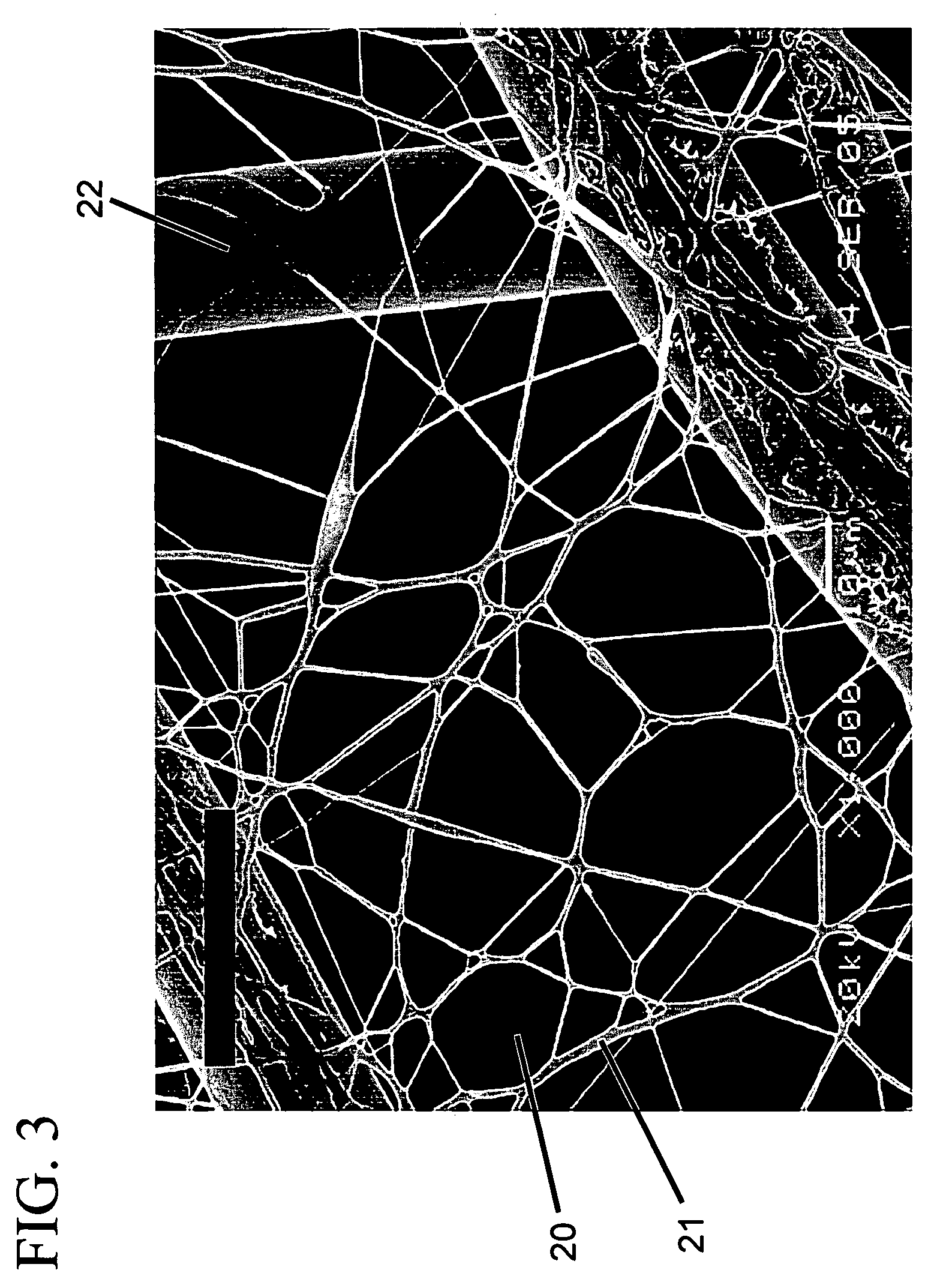Polymer blend, polymer solution composition and fibers spun from the polymer blend and filtration applications thereof
- Summary
- Abstract
- Description
- Claims
- Application Information
AI Technical Summary
Benefits of technology
Problems solved by technology
Method used
Image
Examples
example 1
[0044]A thermoplastic aliphatic polyurethane compound manufactured by Noveon®, TECOPHILIC SP-80A-150 TPU was used. The polymer is a polyether polyurethane made by reacting dicyclohexylmethane 4,4′-diisocyanate with a polyol. This polymer is referred to hereinafter as Polymer 1.
example 2
[0045]A copolymer of nylon 6, 66, 610 nylon copolymer resin (SVP-651) was analyzed for molecular weight by the end group titration. (J. E. Walz and G. B. Taylor, determination of the molecular weight of nylon, Anal. Chem. Vol. 19, Number 7, pp 448-450 (1947). Number average molecular weight was between 21,500 and 24,800. The composition was estimated by the phase diagram of melt temperature of three component nylon, nylon 6 about 45%, nylon 66 about 20% and nylon 610 about 25%. (Page 286, Nylon Plastics Handbook, Melvin Kohan ed. Hanser Publisher, New York (1995)). Reported physical properties of SVP 651 resin are:
PropertyASTM MethodUnitsTypical ValueSpecific GravityD-792— 1.08Water AbsorptionD-570%2.5(24 hr immersion)HardnessD-240Shore D65 Melting PointDSC° C. (° F.)154 (309)Tensile StrengthD-638MPa (kpsi) 50 (7.3)@ YieldElongation at BreakD-638%350 Flexural ModulusD-790MPa (kpsi)180 (26) Volume ResistivityD-257ohm-cm1012
This polymer is referred to hereinafter as Polymer 2.
example 3
[0046]Polymer 1 was mixed with phenolic resin, identified as Georgia Pacific 5137. The Polymer 1: Phenolic Resin ratio and its melt temperature of blends are shown here:
CompositionMelting Temperature (° F.)Polymer 1:Phenolic = 100:0150Polymer 1:Phenolic = 80:20110Polymer 1:Phenolic = 65:3594Polymer 1:Phenolic = 50:5065
[0047]The elasticity benefit of this new fiber chemistry comes from the blend of a polymer with a polyurethane.
PUM
| Property | Measurement | Unit |
|---|---|---|
| Fraction | aaaaa | aaaaa |
| Thickness | aaaaa | aaaaa |
| Thickness | aaaaa | aaaaa |
Abstract
Description
Claims
Application Information
 Login to View More
Login to View More - R&D
- Intellectual Property
- Life Sciences
- Materials
- Tech Scout
- Unparalleled Data Quality
- Higher Quality Content
- 60% Fewer Hallucinations
Browse by: Latest US Patents, China's latest patents, Technical Efficacy Thesaurus, Application Domain, Technology Topic, Popular Technical Reports.
© 2025 PatSnap. All rights reserved.Legal|Privacy policy|Modern Slavery Act Transparency Statement|Sitemap|About US| Contact US: help@patsnap.com



